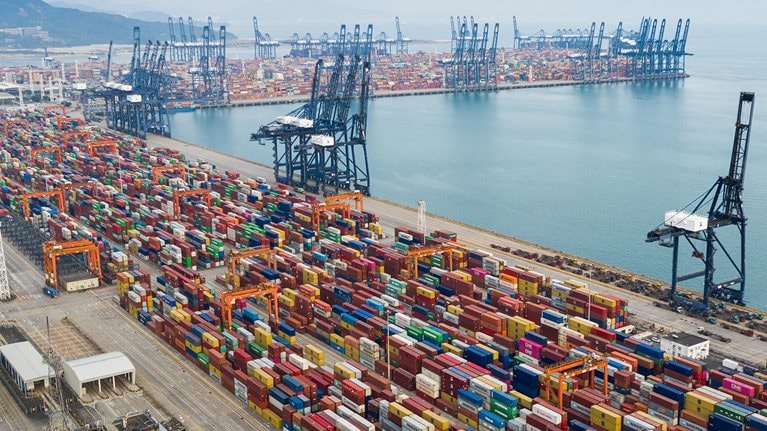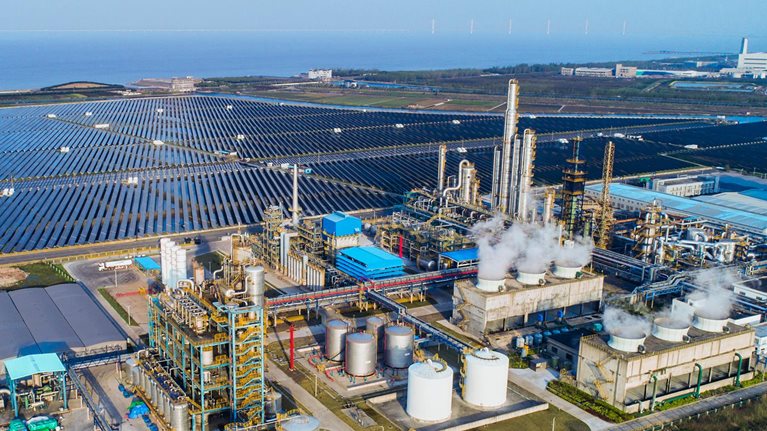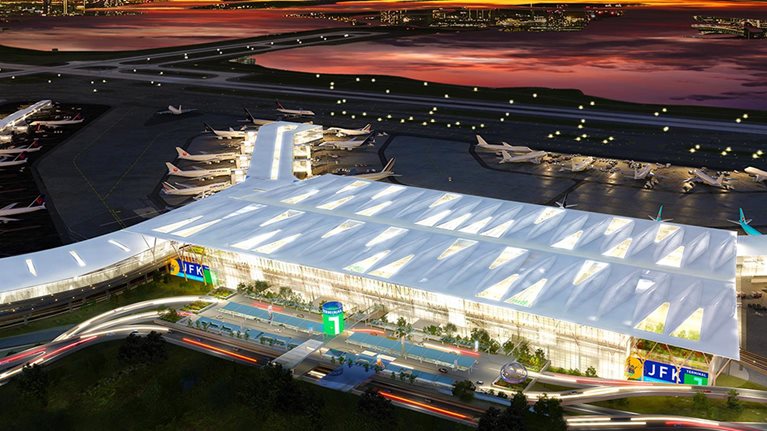Infrastructure investment is increasing to unprecedented levels in several large markets. In the United States, the recently passed Infrastructure and Investment Jobs Act (IIJA) represents the most significant federal investment in decades, raising infrastructure spending to around 0.4 percent of GDP. Meanwhile, the United Kingdom’s government has announced plans to invest in key infrastructure policy areas, including expanding broadband, supporting increased uptake of electric vehicles, and achieving net-zero emissions targets.1 The EU Green Deal also aims to expand alternative-fuels infrastructure to support zero- and low-emissions vehicles.2
While exciting, the increase in spending puts pressure on today’s infrastructure organizations to deliver, with new expectations around resilience, sustainability, and equity goals. Meeting these expectations will require organizations to consider radically changing how they do three things in particular:
- Prioritize against a broader, harder-to-optimize set of criteria in capital programs
- Develop innovative and politically durable funding and financing approaches that match the portfolio or project’s timeline rather than election cycles
- Deliver projects, given the current and growing talent shortage across the project-delivery value chain
If the right actions are taken today, the IIJA could result in project funding going further and faster. In fact, our research shows that when project delivery for infrastructure agencies is in line with best-in-class projects, net-present value of project outcomes can be improved by as much as 10 to 15 percent.
Would you like to learn more about our Operations Practice?
Broadening capital portfolio optimization criteria and approaches
Capital strategy and resource allocation not only define what gets built but also where it gets built, often with generational impacts on economic development, access to economic centers, environmental outcomes, and future spending commitments. The IIJA and the EU Green Deal present opportunities to reimagine the built environment for the next fifty years. However, this will require thoughtful project development and deployment.
Today, capital planning and portfolio optimization need to reflect the complexities that decision-making leaders are faced with. Processes and tools should not only consider the technical performance of assets in “traditional” situations and classic cost-benefit measurements but also objectively consider the impact of increasingly frequent and severe weather events. Armed with this knowledge, leaders can include ways to experiment and innovate with new sustainability approaches, such as testing the reliability of green concrete, as well as better outline the anticipated equity impacts of different investment and development scenarios. As an example, improving access to public transport and infrastructure services may require estimating and then monitoring the specific GHG reductions, congestion, and ability of different demographics to access employment and education centers against clear key performance indicators that are reviewed and evaluated in the same manner as cost and schedule expectations.
Developing innovative and politically durable funding and financing approaches
This level of infrastructure funding provides an opportunity for public entities to put in place funding structures that can endure volatile political cycles and enable the sustainable delivery of infrastructure services. To do this government agencies may:
- Reprioritize and expand capital plans to better attract and sustain funding
- Build robust and innovative business plans for priority projects as well as bolster development and business-planning capabilities
- Structure and procure projects to catalyze private funding and utilize risk mitigation and blended financing instruments
Reprioritize and expand capital plans
Government agencies responsible for managing roads, airports, ports, transit, and power and water systems are due to receive increased levels of funding. A majority of this funding will be competitive, likely requiring government entities to demonstrate that projects are “shovel ready and shovel worthy” as well as financially, environmentally, and socially sustainable. Of the approximately $273 billion in total funding that will flow through the Department of Transportation over five years for newly authorized federal programs, about $97 billion will be competitive. In realigning and reprioritizing capital plans in line with federal funding objectives, asset owners can consider making savvy investments in metrics, analytics, and tools that evaluate and track impacts, such as carbon emissions.
Build robust and innovative business plans
The COVID-19 pandemic has put significant pressure on already-fragile infrastructure business models. Reduced ridership on public transit, deferred maintenance on water systems due to rate caps, and a future of dwindling revenues from traditional infrastructure funding sources, such as gasoline taxes,3 all contribute to the urgency to prioritize robust business planning and resilient funding models. Long-term business plans for projects can help accurately account for capital and operations and maintenance costs, build in funding and risk mitigation tools to manage climate risk, allocate cost overrun and revenue risk to the private sector when appropriate, and secure multiple funding sources. Furthermore, organizations can look into infrastructure project business models enabled by alternative technologies that, under the right conditions, can be at least partly self-fund, such as upgrading curbside services to enable smart parking.
Structure and procure projects to catalyze private funding
Private capital allocated to infrastructure is at an all-time high. This capital is available to fund greenfield infrastructure expansion and technologies that can improve efficiencies in infrastructure delivery and reduce carbon impact, such as solar photovoltaics, electric vehicles, and green cement and steel. As governments perform project prioritization and business-plan development, they may ask whether including private funding, government guarantees, or bringing in innovative insurance products could allow provide more flexibility in meeting budgetary and sustainability goals. As an example, they can build their developer and finance capabilities as well as follow the lead of successful global examples and establish project preparation facilities to build the next generation of tech-enabled green infrastructure.

Voices on Infrastructure: Improving project development and delivery
Radically transforming how projects are delivered, given talent shortage
Prior to COVID-19, the construction industry already faced labor shortages, namely a decline in the labor workforce that hadn’t yet recovered from the 2008 financial crisis and an aging workforce that’s been retiring at an increasing pace (23 percent of industry employees are older than 55 ). In addition, low labor productivity has not generated enough growth through process innovation and technological adoption to offset these losses.
The US construction industry relies on a value chain of approximately 11 million workers, including contractors, engineers, material manufacturers, and distributors. In the United State, this workforce will need to increase in some fields by around 4.5 percent annually to keep pace with IIJA investment (exhibit).

If the demand for infrastructure investment outstrips the growth in jobs along the value chain needed to deliver that infrastructure, projects will likely slow while costs inflate. Thus, projects can emphasize recruiting and retaining highly skilled people throughout the organization as well as investing in ways to reduce the overall workforce hours needed to deliver. The following points can help:
- Identify key personnel, such as senior leaders, project directors, project managers, junior engineers, foremen, and superintendents, and ensure they are assigned to projects for which they can leverage maximum impact. Also, develop specific apprenticeship and development programs for key people to increase their effectiveness, which can have the added benefit of boosting retention.
- Expand the regional workforce by adopting remote ways of working, improving mobility for experienced workers and skilled trades who live in areas of lower demand, or retraining and improving mobility for workers with adjacent experience in economically depressed industries.
- Change mind-sets during the design phase to focus on reducing construction-phase timelines. This requires key performance indicators during the design phase that track engineering and construction hours as well as material and equipment costs. Solutions should push for greater adoption of simplified design and detailed constructability reviews as well as increased use of prefabrication and modularization to shift labor hours off site to manufacturing centers.
- Focus on the supply chain during project execution by collaborating with all project contract parties, adopting new on-site processes to improve productivity of construction field labor, and investing in productivity and automation within materials manufacturing operations.
Unprecedented levels of investment mean there are unprecedented opportunities to spur transformation and prepare the built world for the 21st century. Creating the capacity to deliver in the years to come could make the difference between leading the way and falling behind.


